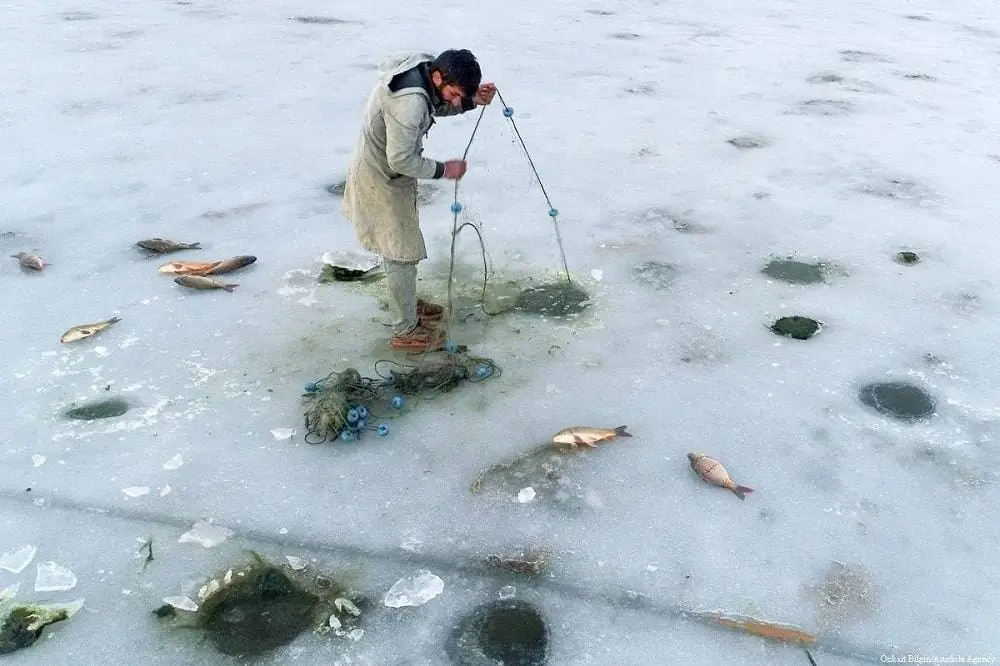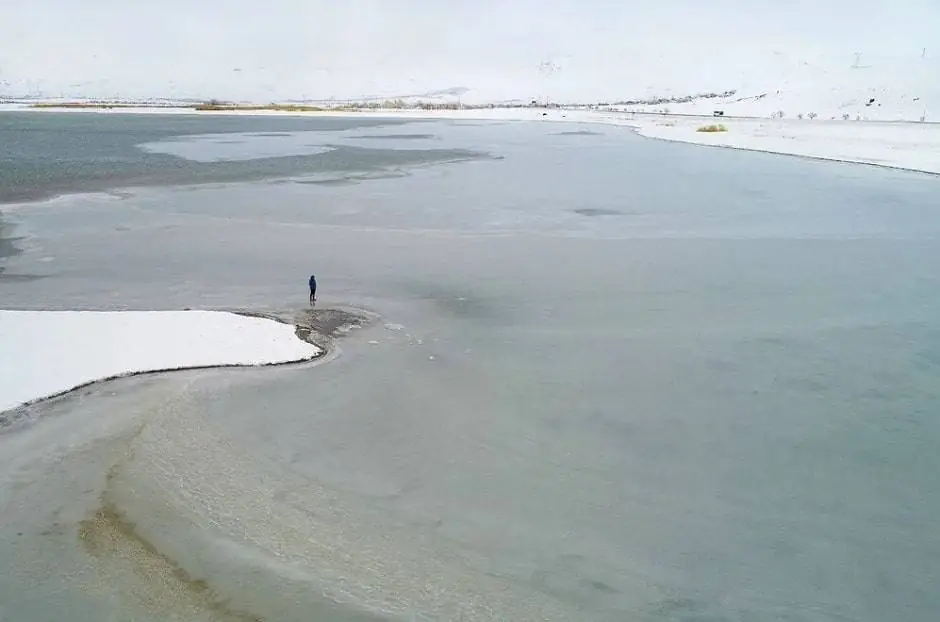Lake Van, also known as Van Gölü in Turkish, is Turkey’s largest and second-largest body of water. The lake is situated in eastern Anatolia, close to the Iranian border. It has a surface area of 1,434 square miles (3,713 square kilometres) and a width of more than 74 miles (119 kilometres) at its widest point. Van Gölü is derived from Van, or Chauon, the name of the capital of the Urartian kingdom that flourished on the lake’s eastern side during the 10th and 8th century BC, and was known to ancient Greek geographers as Thospitis Lacus or Arsissa Lacus. The lake is about triangular in shape and is encompassed in a basin; its brackish waters are unfit for drinking.

Due to cold temperatures, the surface of Lake Van, whose water had been mostly drained due to the drought, was partially frozen. At night, the temperature in the city plunged to 30 degrees below zero, and during the day, it dropped to 10 degrees.
The fact that the temperature was below seasonal standards made daily life difficult in Van, which had its coldest winter in recent years. Parts of Lake Van, whose water is salty and soda, were coated in ice in the city, when the temperature dropped to 30 degrees below zero at night and 10 degrees during the day.
♦ Paquete turístico de 7 días por Turquía: lo más destacado de Turquía
Residents were taken aback by the lake’s freezing and strolled on the 30-40 metre ice sheet that had developed on the surface, taking photographs. Dr. g. Member Mustafa Akkuş of the Van Centennial University (YYU) Faculty of Fisheries said the city’s conditions have been tough this year.

According to Akkuş, ice floes grow in portions of the lake with little depth due to the progressive decline in air temperature, which is exacerbated by dry colds. If the temperature continues to rise, the icing will worsen, according to Akkuş, who added:
“The PH value of the water in Lake Van is around 9.5-9.8. It’s high in salinity. However, the very low temperature brings freezing in these areas.”

